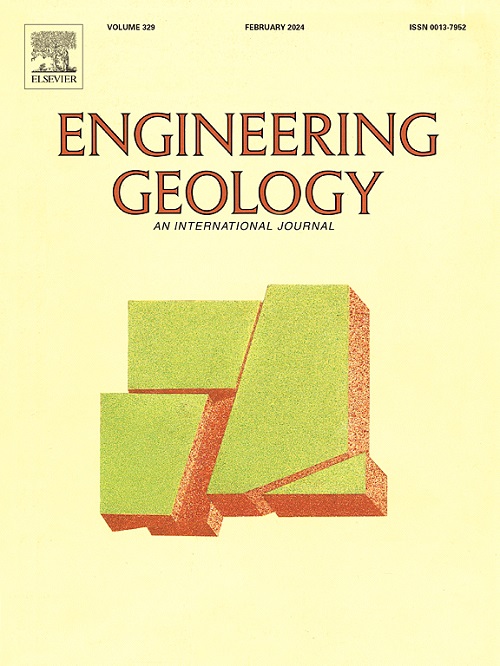Prediction of landslide failure time based on moving average convergence and divergence coupling with Bayesian updating method
IF 6.9
1区 工程技术
Q1 ENGINEERING, GEOLOGICAL
引用次数: 0
Abstract
Predicting landslide failure time is a critical issue in geotechnical engineering. Traditional methods often rely on the empirical power law of material failure to deterministically predict this time, which depends heavily on the accurate selection of precursor time series and the precise identification of the onset of the acceleration (OOA) deformation stage. In this paper, we present an innovative approach that couples the Moving Average Convergence and Divergence (MACD) method with the Bayesian update method, and derive a new model for calculating landslide failure time. The MACD method is employed to divide creep landslide displacement into three distinct deformation stages, accurately pinpointing the OOA point. Following this, we introduce the novel calculation model to analyze landslide displacement time series after the OOA point. Finally, the Bayesian update method, combined with the Markov Chain Monte Carlo (MCMC) method, is employed to probabilistically predict landslide failure time. Taking the Wolongsi, Xintan and Dexing Open-pit mine landslides as examples, the proposed method is employed to divide the three deformation stages and predict the landslide failure time. Moreover, the predicted failure time is in good agreement with the actual failure time, indicating the proposed model's ability to accurately predict landslide failure time.
基于移动平均收敛和发散耦合与贝叶斯更新方法的滑坡破坏时间预测
预测滑坡破坏时间是岩土工程中的一个关键问题。传统方法通常依赖于材料破坏的经验幂律来确定性地预测这一时间,这在很大程度上取决于前兆时间序列的准确选择和加速度开始(OOA)变形阶段的精确识别。在本文中,我们提出了一种将移动平均收敛与发散(MACD)方法与贝叶斯更新方法相结合的创新方法,并推导出一种计算滑坡破坏时间的新模型。我们采用 MACD 方法将蠕变滑坡位移划分为三个不同的变形阶段,从而精确定位 OOA 点。随后,我们介绍了新的计算模型,用于分析 OOA 点之后的滑坡位移时间序列。最后,采用贝叶斯更新方法,结合马尔科夫链蒙特卡罗(MCMC)方法,对滑坡破坏时间进行概率预测。以卧龙寺、新滩和德兴露天矿滑坡为例,采用所提出的方法划分三个变形阶段并预测滑坡破坏时间。结果表明,所预测的崩塌时间与实际崩塌时间吻合良好,表明所提出的模型具有准确预测崩塌时间的能力。
本文章由计算机程序翻译,如有差异,请以英文原文为准。
求助全文
约1分钟内获得全文
求助全文
来源期刊

Engineering Geology
地学-地球科学综合
CiteScore
13.70
自引率
12.20%
发文量
327
审稿时长
5.6 months
期刊介绍:
Engineering Geology, an international interdisciplinary journal, serves as a bridge between earth sciences and engineering, focusing on geological and geotechnical engineering. It welcomes studies with relevance to engineering, environmental concerns, and safety, catering to engineering geologists with backgrounds in geology or civil/mining engineering. Topics include applied geomorphology, structural geology, geophysics, geochemistry, environmental geology, hydrogeology, land use planning, natural hazards, remote sensing, soil and rock mechanics, and applied geotechnical engineering. The journal provides a platform for research at the intersection of geology and engineering disciplines.
 求助内容:
求助内容: 应助结果提醒方式:
应助结果提醒方式:


